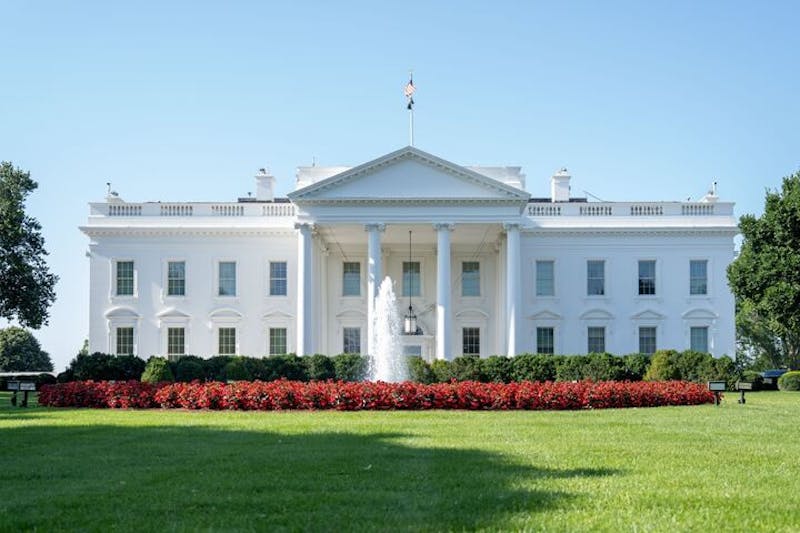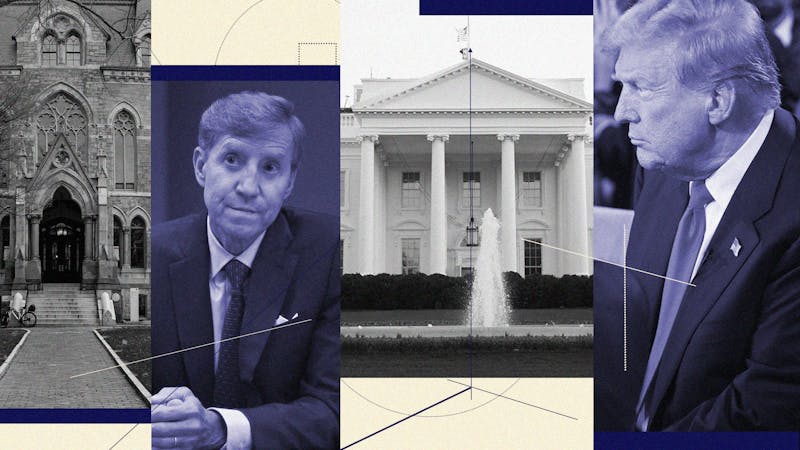Student athletes stand at the center of collegiate athletics, and subsequently the NCAA. They serve their four years of eligibility in, what for most of them, is in the midst of the peak of their intellectual growth.
Yet while they are the core component of the NCAA, several advocates have recently voiced that the NCAA may not be putting its priorities in the correct place.
Bob Timmons, a former track and field coach at Kansas, who coached the likes of Jim Ryun to international fame, recently penned a proposal dubbed the The NCAA: Who Protects Student Athletes.
In this manual -- which was sent to every athletic department, president, the and coaching association -- Timmons asserts that while the NCAA prints in its Principles for Conduct of Intercollegiate Athletics that programs "shall be conducted in a manner designed to protect and enhance the physical educational welfare of athletes," there are fundamental rights that are either being blatantly ignored, or passed over by NCAA administration.
Timmons lays out a bill of rights for student athletes, outlining aspects of their lives that, he believes, student-athletes should come to expect from the NCAA and its membership institutions.
For each amendment, he cites historical examples where he believes had the NCAA acted differently, student-athletes' welfare would be improved.
His concerns about athletes' originate from his 24 years as the hall-of-fame coach of Kansas' track and field team. In the section of the manual entitled Origins of My Concerns, Timmons asserts seven token examples from the Kansas track program alone, to show that his contentions stem from first-hand observations about "the way the NCAA [controls] the lives of student-athletes."
Yet while Timmons may disagree with some of the NCAA legislation as separate entities, his major problem lies with the inability of student-athletes and coaches to approach the NCAA with their concerns - as he states in the rights, there is no "checks and balance" system aligned between the board of the directors of the NCAA and the students.
And it is for this reason that Timmons mailed copies of his document throughout the country - to rally a cause that would back the concept of a student athletes' bill of rights within the NCAA.
The process for implementing such a large document into the NCAA superstructure is daunting and unprecedented, but Timmons feels that this process is the only way to give students the representation they need.
"How it would be assembled in their manuals I don't know," Timmons said.
Virginia Commonwealth Athletic Director, Dr. Richard Sander, who is currently using Timmons' bill of rights as a document in a class he is teaching on Contemporary Sports Issues, feels that the process of inserting a document such as the bill of rights into NCAA legislation would be virtually impossible.
"If you know how big of an organization the NCAA is, and how slowly it moves, to get everybody to do anything is quite difficult," Sander said. "To get an extreme may take quite an effort.
"I think that maybe bits and pieces may be adopted, but to get whole thing adopted, would be nearly impossible. Every one of these [rights] has a group that is its advocate. I think that it would be pretty difficult to take as total document."
While Timmons' has officially named this drive for rights, The National Student Athletes Rights Movement, he is yet to hear responses from any college presidents about the proposal.
"I don't think that they would get involved in this," Timmons said "But I hope that some of them would see this would as a good thing for student athletes."
Timmons acknowledges that should his document have any chance at appearing in NCAA legislation, it would take a serious drive by student-athletes and coaches throughout the country.
In a direct appeal to athletes and coaches, Timmons asserts in bold letters: "You are their protectors" as the final words of section four of the booklet. Over of the course of writing the student athletes' bill of rights, which were released to the public in July, Timmons approached each of three NCAA executive directors that presided during the time he wrote the manual -- Walter Byers, Dick Schulz and Cedric Dempsey.
Yet each time, Timmons felt that his appeals were swallowed by one of the multiplicities of NCAA committees, never to be seen again.
In a letter written on August 29th to Timmons from the current executive director of the NCAA, Cedric Dempsey wrote that while he disagreed with some of the specifics in the document, he believes that Timmons "has influenced the NCAA in a positive way." Dempsey explains in the letter that he has delivered the rights to the NCAA Student Athlete Advisory Committee (SAAC) and government staff, but Timmons vehemently feels as if he is being ignored.
And according to the co-author of the rights, John Van Slyke, the NCAA's ability to ignore the rights is exactly the organizations fallacy -- he believes that it is a top down structure that does not take into account the needs of its constituency.
Because the NCAA is the only body that regulates collegiate athletics, it therefore, according to Van Slyke, has no reason to adapt to the best interests of the student-athletes, despite what may be written in its manual. In effect, he claims the NCAA has a monopoly, a monopoly that has never been tested by a lawsuit.
"Virtually all meaningful intercollegiate competition takes place under NCAA sanctioning," Van Slyke said. "By definition, the only way that you can participate is through an NCAA sanctioned institution and event.
"So right there the NCAA controls everything - you can't compete as athletes without being regulated [by the NCAA]. If that isn't a monopoly, I don't know what is."
While Van Slyke contends that the current structure of the NCAA is at fault, and that only through a revolutionary surge of student-athletes will there be fairness in the structure, he asserts vehemently that Timmons' bill of rights will give students the protection they need to function under the current system. Both Van Slyke and Timmons contend that neither coaches nor student-athletes are members of the NCAA. While every student-athlete and coach must register with the NCAA in order to compete, their lack of a voting presence among the board of directors does not imply membership.
Yet Mike Aguirre, the chair of the Division 1 SAAC, claims that athletes and coaches are members of the NCAA, and that they voice their opinions successfully through the Division 1 SAAC. "All institutions are members, all student athletes, and coaches are members of the NCAA," Aguirre said. "Student athletes play a very important role in the process [of decision making], primarily through student athlete advisory committees. The NCAA is very much committed to the student athlete voice on a range of issues."
Like Aguirre, Ivy League executive director Jeff Orleans feels that students' needs are currently being met by the system in place at the moment. In addition, Orleans strongly asserted that the best way to initiate change was not by first going to the NCAA governing body, but rather concentrate on beginning change where the events actually happen, at each respective school.
"I think that the real issue in the NCAA is not whether athletes or coaches are able to partition a large body," Orleans said. "But rather that it is an open process where with clear ways of communicating.
"I believe that where it happens is at home. The best kinds of long range result happens when an institution sets up a program that benefits the institution rather than setting up a program nationwide"
But Timmons is not alone in his quest to sway NCAA legislation from the outside of the current organization. In 1997, Ramogi Huma -- at the time a linebacker for the UCLA football team -- organized the Collegiate Athletes Coalition. Like Timmons' bill of rights, the CAC looks to "balance power in NCAA sports" and "to improve the conditions and lives of student-athletes."
The CAC currently has a presence on fifteen campuses throughout the United States and received the support of the United Steel Workers of America in January. While the CAC is not a union, Huga feels that the unification of the schools has influenced much of the NCAA legislation in recent years.
"There is progress," Huma said. "The NCAA is moving and we feel like we have been a pretty big part of it. The players are experiencing freedoms that they never had before."
Unlike Timmons' proposed bill of rights, the CAC mainly focuses on issues concerning college football - recently the CAC's concerns have focused on assuring safety guidelines in football practices. But that could change in the future.
"We are trying to reform the entire NCAA structure," Huga said. "Right now we're focused on organizing football - we don't have much capacity to organize all of Division 1.
But the CAC's largest campaign, and the main reason for the support of the steel workers' union, involves petitioning for a larger living stipend - the CAC contends that the NCAA's current "full grant in aid" package puts students under the poverty line with no permissible way to earn money for basic needs.
Aguirre claims, however, disputes this point, recognizing that "non-revenue sports" do not have the same influx of money as basketball and football.
"You are dealing with a finite amount of money, and you need to be careful with money situations," Aguirre said. "Football and basketball are getting full scholarships and smaller sports aren't -- you need to look that all student athletes aren't receiving this aid."
Yet while Timmons and Huga feel that the NCAA's current appeals process is not sufficient for its athletes' interests, there are many who are vehement that the current structure of the SAAC gives students an ideal forum to voice their opinions and generate change.
But if Van Slyke's and Huga's claims are that the structure itself is fallible, one committee under the NCAA's jurisdictions certainly is not their solution to the problem -- a student- athlete revolution could be.
About the Series For the next four days, The Daily Pennsylvanian will investigate student-athletes' rights. The DP will focus on how student-athletes can approach the NCAA with concerns, and will discuss the contention that student-athletes lack a voice within the NCAA hierarchy. Using documents penned both within and outside of the NCAA, the DP will also examine how these works will serve to accentuate student-athletes' rights in the future.
The Daily Pennsylvanian is an independent, student-run newspaper. Please consider making a donation to support the coverage that shapes the University. Your generosity ensures a future of strong journalism at Penn.
DonatePlease note All comments are eligible for publication in The Daily Pennsylvanian.







